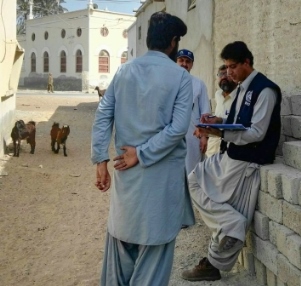 25 April 2017 – WHO, the Ministry of National Health Services, Regulations and Coordination, and the Field Epidemiology and Laboratory Training Programme (FELTP) of Pakistan conducted an intensive house-to-house investigation over the past few weeks to confirm an outbreak of chikungunya fever in Balochistan province in Pakistan where it has been reported for the first time.
25 April 2017 – WHO, the Ministry of National Health Services, Regulations and Coordination, and the Field Epidemiology and Laboratory Training Programme (FELTP) of Pakistan conducted an intensive house-to-house investigation over the past few weeks to confirm an outbreak of chikungunya fever in Balochistan province in Pakistan where it has been reported for the first time.
The investigation was carried out in response to a sudden rise in the number of cases of acute febrile illness in Gwadar city in Balochistan. The number of suspected chikungunya cases reported in Balochistan as of 19 April stands at 1962. A total of 28 blood samples have tested positive for chikungunya so far.
Pakistan’s first-ever cases of chikungunya were reported in December 2016 in Karachi city in Sindh province. Between 19 December 2016 and 14 April 2017, a total of 1419 suspected cases of chikungunya have been reported in various districts in Karachi. No deaths have been reported so far.
Chikungunya is a mosquito-borne viral disease that causes fever and severe joint pain that can be debilitating for some. Chikungunya can easily be mistaken for dengue or Zika as they share clinical symptoms and is transmitted by a common vector – the Aedes mosquito. This makes the detection and diagnosis of chikungunya both critical at the early stages and challenging.
Additionally, since the disease is new to the populations, there is a fear that a large number of cases could occur within a short period of time without early detection and necessary control measures instituted rapidly to contain the disease.
The house-to-house investigations involved collecting epidemiological and clinical data from those who fell ill; collecting blood sample for testing; and developing a hypothesis on the generation of transmission. The field investigators found that that Gwadar’s first cases of chikungunya came from Karachi through travel between the cities and subsequent cases were based on local transmission.
The timely field investigation resulted in confirming of the disease as well as implementing necessary public health measures to contain the spread of the disease to neighbouring districts. This included organizing awareness and information sessions for the local communities on ways to prevent mosquito bites and limit mosquito breeding sites.


